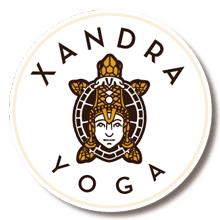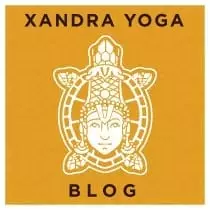Photo Credit: Isabelle Mahé – Jeune femme à sa coiffure
The neck is the posterior part of the head starting below the occiput. In latine we use the word « nuca » that means the spinal cord.
The spinal cord is made of nerves that relay messages between the brain and the rest of the body. It is housed in a tunnel made by the vertebrae of the spinal column (Source Study).
During an asana practice the neck is solicited not only during inversions and siting postures but furthermore during the standing sequence. Standing sequence is warming up our body in order to practice the sitting postures. Therefore if the warm up is not good then we will have more risk of hurting our body during the sitting sequence.
As for example while doing the Sun Salutation if the head is not following the movement then the action will not be in correlation with the intention, therefore neck muscles won’t be ready for the sitting sequence. That is one of the reason why we are using the Dristhis.
On the inhalation while rising the arms up the gaze of focus should be the thumbs (Anghusta), during that particular movement the head has to be held and not fully into an extension.
It is a controlled extension of the neck. If we keep the head « sloppy » then it will have an impact on the shoulders and the pression toward the cervicale spine will be too strong as a head is about 5 kilos weight.
In order to keep and hold the head in a proper alignement we are using the « Splenius ».
The origin of the word Splenius comes from the greek language and means « bandage« .
There are two others words such as « capu » meaning « skull » and « cervicis » for cervicales. Then knowing what does the word mean give us a good indication of the insertion of these muscles. The Splenius Cervicis is attached from T3 or T4 to T6.
The word « bandage » gives another explanation of the action of this muscle, it allows the extension and the rotation of the head. For instance during Trikonasana if the head is completely loose and relaxe there will be a huge impact on the alignment and potentially might hurt the lower back, therefore this particular muscle (amongst others) will be used to keep the head high and straight.
When we are doing a neck extension we always should keep in mind the feeling of moving forward, extended and lengthening. We should not compress.
During Urdhva Tadasana when arms go up followed by the dristhi the movement intention will be completely different if we do not extend the head as well lengthen it.
In the case that the head is not held properly it will lead to a torso backbend and the alignement will be loose. The body will follow the head.
If the head is not aligned and held then the rest of the body will collapse. Furthermore being able to bring back the head in the right alignement will allow a better connection with the Bandhas.
Same as in Purvotanasana, the drishti is the nose, even though the head is in extension we should be able to lengthen the back of the skull, the back of the neck or simply to bring more space in between the cervicales. If we just let go the head then the opening of the chest won’t happen and the shoulders will start collapsing.
There is a beautiful connection between the head and the center (the core). As soon as we start working with conscious we start bringing the movement from within to the outside. Then the body will be aligned.
For all siting postures in forward fold we should be able to create a connection from the head to our sacrum, to lengthen front in opposition toward the sacrum with the idea of bringing space not only from the rib cage and the pelvis but as well from the cervical to the sacrum.
In one inversion such as Salamba Sarvangasana the cervicales should not be pushed down but spread.
I do believe that the visualisation help to enhance our practice.
Just take time and visualise the Splenius and its name as well as knowing its meaning will guide you in the right movement pattern.
Enjoy your Practice!


